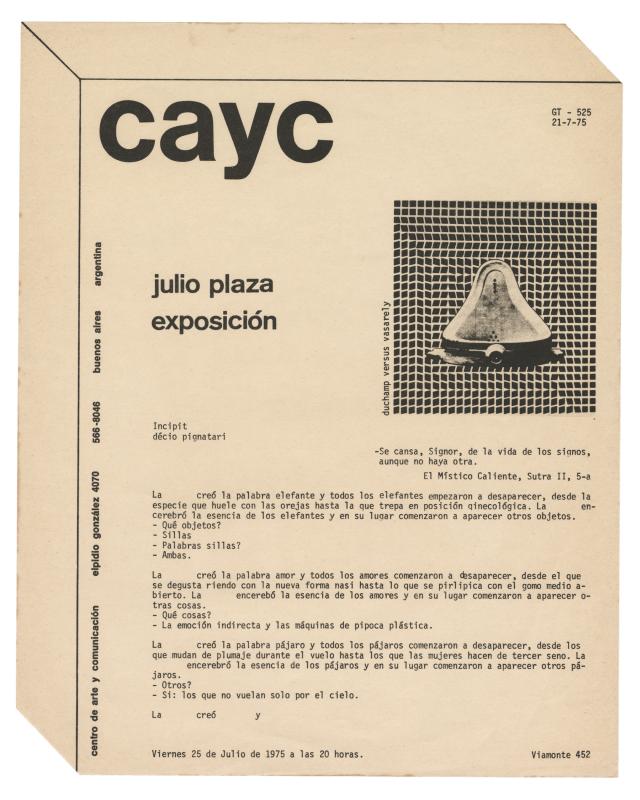Ever since it was founded, the CAYC (Centro de Arte y Comunicación), helmed by the cultural promoter, artist, and businessman Jorge Glusberg, was intended as an interdisciplinary space where an experimental art movement could flourish. The establishment of collaborative networks connecting local and international artists and critics played an important role in this process. The exhibitions shone a light on these exchanges, in which overviews of trends or individual artists provided an introduction to the innovations of international contemporary art and made Argentine and Latin American artists better known on the global scene.
During the 1970s, Glusberg forged a network of contacts in South American and international institutions based on a common interest in the experimental practices that were all the rage at the time. He shared programs with them that addressed this subject in an attempt to encourage the production and exhibition of Conceptual works at a time when Latin America was living with violent dictatorships and coups d’états. The MAC USP (Museu de Arte Contemporânea da Universidade de São Paulo), which in those days was directed by the curator and art historian Walter Zanini (1925–2013), was part of that network. Glusberg and Zanini helped to champion the growth of “a transnational dialogue territory” and organize a number of initiatives, including an exchange of local and foreign artists through exhibitions and symposiums (Luiza Mader Paladino, “Intercâmbios internacionais,” Caiana, 2016).
The one-woman show of works by Regina Silveira (b. 1939) in Buenos Aires was one of those initiatives. Silveira was a major figure in the experimental art world in São Paulo during the 1970s, when Brazil was under the thumb of a military dictatorship that lasted twenty-one years (1964–85). From that point on, her work expressed an ironic-political perspective in the new mediums available for the production and circulation of images. She broadened her theoretical experience with years of teaching visual arts classes at the FAAP (Fundação Armando Álvares Penteado) in São Paulo, where she lived with her partner Julio Plaza (see GT-525 [doc. no. 1476852]), with whom she taught classes at the UPR (University of Puerto Rico), at the Mayagüez campus.
This newsletter includes a picture of a work from that period and an essay in which she discusses her creative process. She relies on images from the mass media—and the theoretical arguments that sustain them—subjecting them to different graphic treatments (labyrinths, boxes, or divisions) designed to alter the senses with undercurrents that reflect an inability to breathe and feelings of loss, control, and isolation. Her works rely on a wide variety of mediums, suggesting a reflection on the politics of images and the print medium itself.

